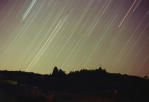Dust from the Comet Swift-Tuttle called Perseid Meteors shall hit the earth between July 23 and August 22.Comet Swift-Tuttle is big, about the same size as the asteroid that wiped out dinosaurs 65 million years ago. Around 1992 it was predicted that Swift-Tuttle might strike the Earth in the year 2126. New data and calculations show that it is not possible for now. There's no danger of a collision for at least a millennium from now.


The dust from the comet Swift Tuttle called the Perseids are harmless to the inhabitants of the earth.The annual Perseid meteor shower for 2004 would be visible more than good on August 11 at about 21h UT.
It has been predicted to pass within 0.0013 AU from the Earth's orbit and it shall cause a moderately strong outburst of meteors.
The perturbations by Jupiter will now direct all incoming Perseids meteoroids about 0.01 AU closer to the Sun, which allows the possibility of Earth passing through the densest core of the yearly stream.
With the Moon at waning crescent phase on August 11, observing conditions for the 2004 Perseids meteor activity are excellent throughout the world on this day.
Because the radiant is at a high northern declination (+58�), most northern hemisphere observers may expect to see meteors throughout the night.
From August 11th when the shower peaks, sky watchers can expect to see possibly hundreds of meteors per hour.